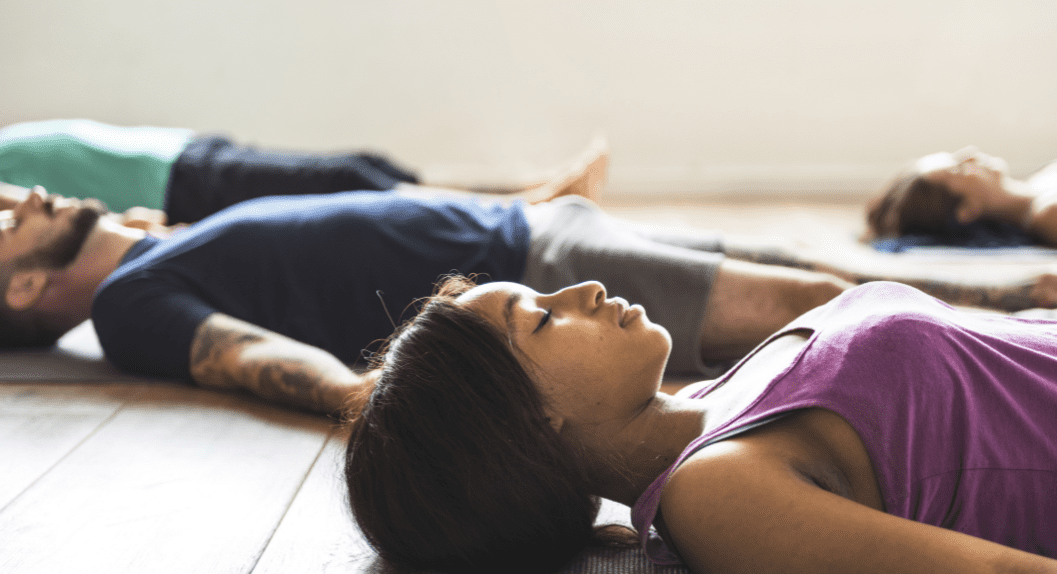What is the purpose of your Hatha Yoga practice? Why do you practice? What are you hoping to achieve through your practice?
Just as Patanjali’s Yoga Sutras form the definitive text of Raja Yoga, so is Svatmarama’s Hatha Yoga Pradipika the authoritative text of Hatha Yoga. The first two verses of this scriptural text do not leave much to the imagination as to why one would practice asanas and pranayama:
This science of Hatha Yoga shines brilliant and serves like a ladder for a seeker aspiring to climb to the highest in Raja Yoga. (1.1)
The science of Hatha Yoga is taught only for the sake of Raja Yoga. (1.2)
Svatmarama states clearly that asanas and pranayama are needed to reach the goal of Raja Yoga (chitta vritti nirodaha). For when we are trying to climb an eight-rung ladder with two of its limbs missing, our ascent becomes much more difficult. Swatmarama, in fact, even emphasizes that these two limbs should not stand on their own; that the yogic ladder is comprised of the two rungs that precede asana and pranayama and the four that follow. More specifically, if asanas and pranayama are practiced outside of the realm of the complete science of yoga—if yama and niyama, as well as pratyahara, dharana, dhyana, and samadhi are not considered in a person’s sadhana—then these two limbs should not be considered Yoga. For the sake of common parlance, people can say that they are practicing Yoga, but Svatmarama probably wouldn’t call it that.
Later the text states:
Hatha Yoga without Raja Yoga and Raja Yoga without Hatha Yoga cannot be accomplished;
therefore, one should practice them together until perfection is reached. (11.76)
Svatmarama, again, stresses the point made in the first verse about the crucial role of Hatha Yoga in accomplishing the goal of Raja Yoga. But, here, he also makes it clear that mastery in Hatha Yoga will not be attained without integrating the other limbs of Yoga into our daily life. We may be able to do difficult postures, hold them for a long time, and be held in high regard as advanced yogis, but we will not really have understood what an asana is.
As Yoga teachers, we know that many, if not most of the people coming to our Hatha classes are not there “only for the sake of Raja Yoga.” They are probably there for more mundane reasons pertaining to the state of their body, and it looks like they are receiving quite a lot of benefit. So why is the author so emphatic that asanas and pranayama are to be practiced only as an integrated part of our practice of Raja Yoga and not as an end in itself?
I came up with these four possible reasons:
- Attitude and motivation determine whether something should be called Yoga. Yoga is not an activity. Rather, it is the attitude, motivation, and spirit in which we perform the activity that makes it Yoga. For Patanjali, anything done for the sake of refining the mind ( chitta) to get beyond (nirodhah) the thoughts (vrittis) is Yoga. For these physical postures and breathing practices to fulfill this guideline, they should be practiced with the spirit of inquiry to discover that which is beyond the self, beyond the “me.” When Hatha Yoga is practiced with this kind of probing, it will naturally lead us into contact with subtler and subtler levels of our being. It is our duty as Yoga teachers to create an atmosphere in the class where Patanjali could walk in and say, “Now, that’s Yoga.” So, what would be some of the distinguishing characteristics of such a class? The Hatha Yoga class should support an inward, introspective awareness. This leads to a noncompetitive atmosphere where we minimize the temptation of students to look more flexible than they are, to feel pressured to reach where they reached last week, or to pay attention to anyone’s body but their own. The teacher’s very presence should convey that an externally oriented, aggressive attitude will certainly, in the long-run—and probably even the short-term— impede the student’s progress. Our role as teachers is to foster an environment conducive to practicing with a subtle sensitivity and a focus that makes asanas a vibrant meditation, leading to the pranamaya kosha and beyond.
- To utilize the power properly. The latent energies, or shakti, awakened and augmented through asanas and pranayama are very powerful. To ensure that this shakti is used constructively, we need to be striving to purify the mind through ethical guidelines and giving a spiritual focus to our life on earth. If the ego lays claim to the awakened energy, then we are likely to wreak havoc in peoples’ lives and to strengthen the division between our self and our Self.
- To avoid using physical adeptness as a measure of spiritual progress. If we measure our success as yogis by correlating our physical adeptness (or lack thereof) with the state of our souls, we are setting ourselves up for problems. If we measure ourselves with the ruler of how high our legs go up in Salabaasana, or how long we can sit in Padmaasana, we will find ourselves cast adrift the moment any physical limitation arises. Through injuries, aging, economic pressures, etc., we may find that what we could do yesterday, we cannot do today. Will we then pronounce ourselves spiritual failures? Even experienced practitioners fall prey to this mentality. Esther Myers, while recovering from breast cancer, wrote: “There have been long periods of frustration and hopelessness. It’s easy to preach that Yoga isn’t competitive and that it’s not about looking like a picture in a book. But I have been in tears looking at the cover of my own book and wondering if I will ever do that pose as well again.” Let’s keep in mind that the body is our vehicle to take us on this journey. We are not the vehicle.
- To attain the maximum benefits. As Svatmarama indicates, if we practice asanas solely from the physical perspective with the goal of perfecting the body, we will never truly gain mastery in them. This mastery, called asanajaya, is gained when the body—the annamaya kosha—is permeated with conscious awareness by being attuned to deeper levels of our being. For this to be achieved, meditation and the other limbs of Raja Yoga are necessary.
Can you think of additional reasons for bringing a spiritual dimension into our Hatha Yoga practice? No doubt most of the students coming to our Hatha Yoga classes are not there with the motive: “I must achieve Chitta Vritti Nirodhaha!” God bless the people who get themselves on the mat, whatever reason got them there. As teachers, though, and particularly as Integral Yoga teachers, we should be clear about the deeper and higher purpose of the practice, and this purpose should in some subtle way find expression in the classes we teach.



